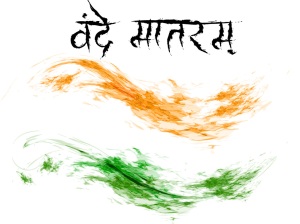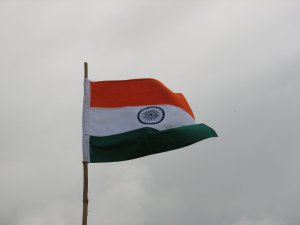Archimedes & The Law Of The Lever
The lever presents us with one of the most simple of machines that humans have invented. In fact the lever is one of the six simple machines, which are the building blocks of any complicated, mechanical equipment that we produce. The total six simple machines are:
▪ Lever
▪ Wheel and axle
▪ Pulley
▪ Inclined plane
▪ Wedge
▪ Screw
Simple machines are devices which use mechanical advantage to multiply force. Simple machines can be used to increase the output force, this is at the cost of a proportional decrease in the distance moved by the load. With the mechanical advantage that you get in a lever, you can lift large loads, with application of much less force. We use levers in a variety of ways in our daily life. Just to name a few, the weighing balance, see-saw, even when you lift a weight with your own hand! How many can you identify?
But being a simple machine does not mean that the secret of it can be derived very easily. Just given with a lever, some weights and no other knowledge it is hard for us to derive the mathematical expression for the law of lever. Whereas the Newtonian mechanics gives us a proof, we will see how this proof was presented first. The proof is by Archimedes. Archimedes was the first person to reason and build a theory about the lever, amongst many others things he did besides crying Eureka!! We will sketch the outline of his proof about the law of lever.
If two weights w, W are placed on a horizontal weightless stick, which rests on a support called the fulcrum. One of the following three scenarios will occur. Either the stick will tilt towards the right or the left side, otherwise it will remain horizontal. When the stick remains horizontal it is said to be in equilibrium position. Archimedes considered the question:
“If W is at a distance D from the fulcrum and w is at a distance d from the fulcrum, what condition on W, D, w, d corresponds to equilibrium?”

The answer known to almost all students of physics is that the products wd and WD should be equal. Archimedes did not give a proof to this law in this form. For it is said he would have been offended by multiplying two entirely different quantities such as weight and length. The balance is expressed by him in terms of equality of two proportions W : d = D : w. The statement is that the weights balance at distances inversely proportional to their magnitudes.
Archimedes made some assumptions, which were supposed to be self evident. The assumptions are:
- Equal weights at equal distances from the fulcrum balance. Equal weights at unequal distances do not balance, but the weight at the greater distance tilts the lever towards itself.
- When two weights are balancing and we add some weight to one of the weights, the weights no longer balance. The weight to which we add goes down.
- When two weights balance, we take some weight away from one, the weights no longer balance. The side holding the weight we did not change goes down.
Archimedes uses this assumptions to prove propositions which lead us to the law of the lever. The point in the proofs is that the assumptions should not contradict each other.
Proposition 1: Weights that balance at equal distances from the fulcrum are equal.
Proof: If they are not equal, remove the greater weight difference of the two weights. We have now two equal weights at equal distances from the fulcrum. But according to assumption 3 they do not balance. This contradicts assumption 1. Hence the proof.
Proposition 2: Unequal weights at equal distances do not balance, but the side holding the higher weight goes down.
Proof: Take out the difference between weights, by assumption 1, the remaining two weights balance. If we put back the weight that we have taken, then by assumption 2 weights now do not balance.
Proposition 3: Unequal weights balance at unequal distances from the fulcrum, the heavier weights being at the shorter distance.
Proof: Suppose that the heavier weight is W which is placed at A, and lighter weight w placed at B and the fulcrum is at C, consider the case that they balance each other. Remove W – w from the heavier weight W, thus we have two equal weights. Now by assumption 3, the remaining weights do not balance, but w goes down.
But this is not possible for the following reasons:
Either AC = CB, AC greater than CB, or AC less than CB. Archimedes rules out the first two possibilities. If AC = CB, by assumption 1 the remaining weights balance. If AC is greater than CB then again by assumption 1 weight at A will go down. Thus AC must be less than CB.
Proposition 4: If two equal weights have different centers of gravity, then the center of gravity of the two together is the midpoint of the line segment joining their centers of gravity.

[Archimedes does not define the term “center of gravity”, but approaches the term axiomatically. For a mathematical definition knowledge of integral calculus is required. But we can still understand the term in physical terms. We can assume that all the weight is concentrated at the center of gravity. Another ways is to visualize that the entire weight acts as if it is located at one point, which we know as centre of gravity. ]
Proof: Let the equal weights be w and W, with centers of gravity located at A and B. Let M be the midpoint of the segment AB. Assume that the weights balance at C, a point different than M.
The distance AC is not equal to the distance CB. Hence by Assumption 1 the weights do not balance each other, no matter how C is chosen, as long as it is different from M. This implies that M must be the balancing point.
Here a tacit assumption is made that any two weights have a center of gravity, that is, a balancing point. It is a restatement of Assumption 1 in terms of center of gravity.
Corollary: If an even number of equal weights have their centers of gravity situated along a straight line such that the distances between the consecutive weights are all equal. Then the centre of gravity of the entire system is located on the midpoint of the line segment joining the centers of gravity of the two weights at the middle.
The figure below illustrates the corollary. The center of gravity of the six weights is at C.
Proposition 5: Commensurable weights balance at distances from the fulcrum that are inversely proportional to the magnitudes of the weights. More precisely, if commensurable weights W and w are at distances D and d form the fulcrum, then:
D/d = (1/W)/(1/w) = w/W
[By commensurable it is meant that the ratio of w/W is rational, i.e. there is a third number m such that W = pm, and w = qm and w/W = q/p, and p and q are whole numbers.]

Proof: For convenience let us take a specific case let the ratio of the weights be known, lets say 2:5. So that w/W = 2/5. Let w and W be located at A and B. Let M be their balancing point. What is needed for the proof is that AM : BM = 5:2.
AM/BM = [1/2] / [1/5] = 5/2
We cut the segment AB in to 5 + 2 = 7 equal parts. Divide the weight W into 2*5 = 10 equal parts, and place 5 of them at the midpoints of the five sections just to the right of B, one in each section and five of them in congruent sections to the left of B. Similarly divide w, into 2*2 = 4 equal parts and place 2 of them on the left of A at the and 2 of them to the right of A.
Thus we have a collection of 10 weights each W/10, whose centre of gravity is as same as that of W i.e. B. Similarly the centre of gravity of the w/6 weights is same as that of w, i.e. A. We now have a system of 14 equal weights, which are equally spaced. This collection of 14 weights by the corollary to Proposition 4 balances around the midpoint of the segment holding the 14 weights. This implies the ratio of the lever arms is 5:2, since AM has 2 little weights, and BM has 5 of them. This completes the proof.
Proposition 6: Incommensurable weights balance at distances inversely proportional to their magnitudes.
Proof: Let the weights be W and w at respective distances D and d from the fulcrum. Assume that WD = wd and that the two weights do not balance each other. Assume that weight W goes down.
Remove a small amount of weight from W to obtain W’ such that W’ still goes down but W’ and w are commensurable. Since W’D < wd, W’ rises. This contradiction – that both W’ rises and goes down – proves the proposition.
Is that what prompted him to say
“Give me a place to stand and with a lever I will move the whole world.”
Given the things that he asks for i.e. a place to stand and a lever, will a single person be able to lift the earth?
Let us do some order of magnitude physics for this. We assume that we have a strong rigid rod which will act as lever, which is sufficiently long. Lets say that we have a strong person of who can apply a force of $10^3 N$. We know that the weight of earth is $10^{25} N$. We then calculate in order to displace the earth by 1 cm, how much distance Archimedes will have to move. So that $ \frac{10^{25} \, N}{ 10^3 N} \times 1\, cm \, = \, 10^{22} \,cm}$. Now $10^{22} \,cm \, = \, 10^{20} \, m$. This is too large a distance. So even if Archimedes moved at an fantastic rate of 100 m/s it would still take $10^{18} \, s $ to complete the arc of $10^{20} \, m$. This is equal to $ 3 \times 10^{10}$ years or 3 million years. So to do this fantastic job, Archimedes would have to be incredibly powerful, supplying $10^3 \, N$ force for such long, and also should have a fantastic age of 3 million years!!
But anyways Archimedes was a great man, no doubt about that. Archimedes is referred to as greatest mathematician, physicist and engineer of the antiquity. We will get to other wonderful discoveries of the Archimedes soon…
Mach gives albeit a somewhat different account of the derivation of this law.
References:
Archimedes: What Did He Do Besides Crying Eureka?
Sherman Stein
The Science of Mechanics
Ernst Mach
PS: Typing math without LaTeX is a pain….
PPS: Finally \ \LaTeX \ on the blog \ \ldots \












